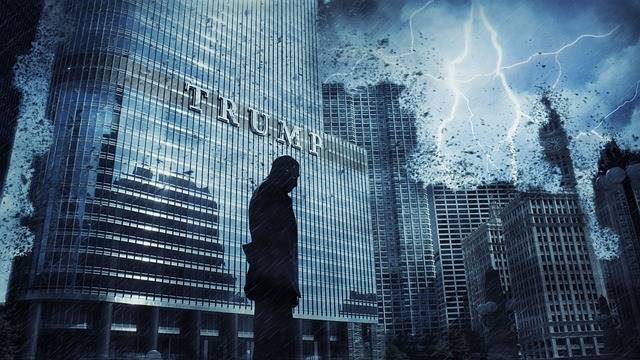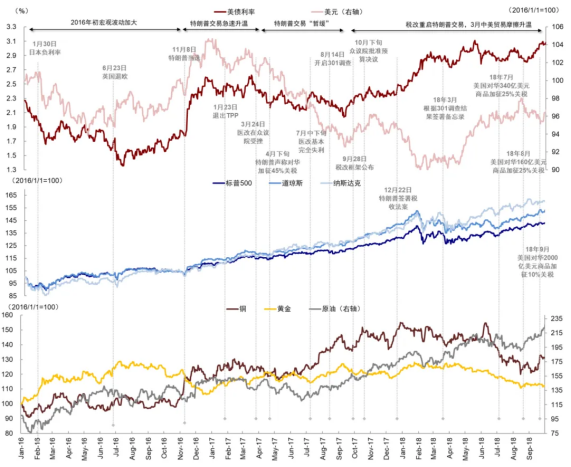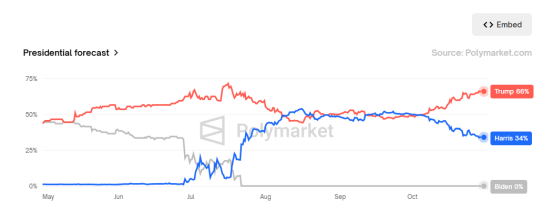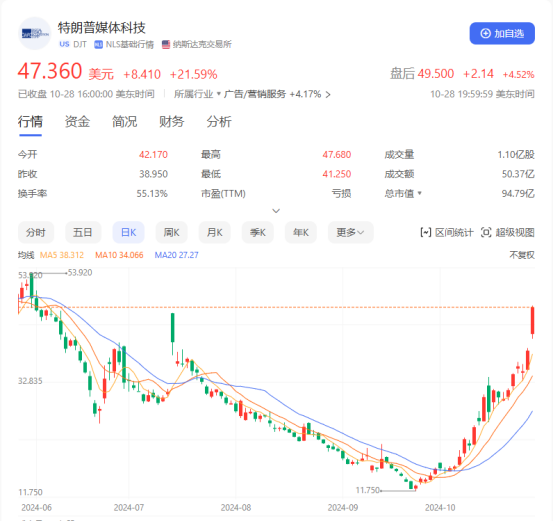Author: Gyroscope Finance

With only one week left until the election.
The US election is approaching, and as of the afternoon of October 27th local time, more than 41 million voters nationwide have already cast their ballots for the 2024 presidential election. Affected by this, the crypto market volatility has also been increasing. Driven by the "election trade", BTC has taken the lead in launching a rally, returning to the long-lost $71,000 level this week, and the crypto sector has generally risen, with the MEME market immersed in PolitiFi.
Returning to the two candidates, the competition between Harris and Trump is becoming increasingly intense. Due to the poor handling of the "Milton" hurricane and the conflict between Iran and Israel, Harris' approval rating has dropped rapidly, and Trump has successfully taken the lead, not only continuing to expand his advantage in betting odds and swing state polls, but also closely catching up in traditional general polls. From the current situation, Trump seems more likely to become the next US president, and the "Trump trade" is therefore about to be triggered.
Reviewing the policy strategies of the two, the overall direction is to use government subsidies as a starting point, with the core purpose of driving capital inflows, but the two have slightly different approaches. Trump uses tax cuts to promote the development of private enterprises, while Harris tends to directly give money to subsidize residents, and the capital inflows are also different. Harris inherits the governing philosophy of the Biden administration, focusing on key core industries such as chips and new energy; Trump still adheres to the radical tariffs and "America First" proposition.
In the current situation, Trump's winning rate is higher, and the financial market is naturally more focused on his policy proposals. Specifically, citing the views of CICC, domestic tax cuts, increased tariffs on foreign countries, relaxed regulations, expulsion of illegal immigrants, encouragement of fossil energy, emphasis on technology, and foreign policy isolationism are the main governing directions of Trump. The superimposed impact of the governing directions, Trump's inauguration may bring upward inflation risks, affected by which, the Fed may take measures to slow the pace of rate cuts and control a higher terminal interest rate. In terms of the capital market, if economic resilience is maintained, a soft landing will be beneficial to US stocks, cyclical commodities and BTC, but in extreme cases, inflation will suppress the capital market, and anti-cyclical varieties such as gold will benefit.

Estimation of the impact of Trump's policies on the US economy, source: CICC Research Institute
Here we can refer to the 2016 US election, when the market also triggered the "Trump trade", especially after his victory in November 2016, the optimistic expectations suddenly rose. The US bond yield rose from 1.7% to 2.6% within a month, and the US dollar index also broke through 103 from 97. Looking at the US stock market, the three major indices rose by 10% during this period, and looking at commodities, inflation expectations drove copper and crude oil to surge, while gold reversed and fell 3% within a month after the election.

Data source: Bloomberg, CICC Research Department
It is obvious that Trump's victory in 2016 can be described as a black swan event, but currently, the capital market has been pricing in his potential victory. The most prominent variety is undoubtedly cryptocurrencies. Since Trump has repeatedly endorsed cryptocurrencies in public occasions, and has recently launched a family crypto project, the crypto market has high expectations for him.
From the crypto prediction market Polymarket, the betting amount has exceeded $2.1 billion, and Trump's winning rate has reached 66.2%, far exceeding Harris by 33 percentage points, and the gap is still widening. The BTC market has responded strongly to this, with BTC continuing to rise as the election approaches, and is currently above $71,000. Among this, the expectation is undoubtedly one of the reasons for the rise.

How will BTC and the crypto market perform before and after the election? Major institutions and analysts have also had heated discussions on this.
Traders generally believe that the election is an important trading opportunity, and many have bet on the post-election rebound. According to Matrixport data, the US election is igniting market sentiment, with the funding rate of Ethereum perpetual futures reaching the highest level since May 2024, and the strategy of buying the dips is prominent.
Top trader Eugene Ng Ah Sio also commented on social media that the positioning has been basically clear, and the upward trend will be opened after the election, and he also emphasized that the speculative long positions in October have basically been wiped out, and most people will avoid risks in the week after the election, and SOL is the clear asset choice.
Derivatives have also reached similar conclusions. Deribit CEO Luuk Strijers said that derivatives traders are laying the groundwork for a bullish trend in BTC in the days after the US election on November 5th. For options expiring on November 8th, the open interest value exceeds $2 billion, with the main strike prices at $70,000, $75,000 and $80,000, and a put/call ratio of 0.55, indicating that the number of open call options is twice the number of put options. Compared to Mark IV, the Forward IV has a clear increase, especially during the election cycle, indicating that traders expect higher volatility. The forward implied volatility is 72.29%, indicating that the price may fluctuate about 3.78% in the days after the presidential election. Compared to put options, the demand for call options is strong, and investors are not too concerned about managing downside risks.
Institutions also hold a more optimistic attitude. Just half a month ago, Standard Chartered Bank, which has long been dubbed "outrageous" by the market, stated that BTC is showing strong upward momentum and may approach the historical high of $73,800 on the US election day. It believes that the factors driving the rise of BTC include the steepening of the US Treasury yield curve, the inflow of funds into spot BTC ETFs, and the increased probability of Trump's victory. From the current BTC price, Standard Chartered may be right for once.
Matthew Sigel, head of digital asset research at VanEck, also made a forecast in an interview, saying that investors are preparing for the US election, and mentioned that this election will follow a similar path to 2020, with a short-term volatility after the winner is announced, and BTC will then start to rise, and Trump has a higher winning rate. Bernstein also reiterated that if Trump wins the US election next month, BTC's price could reach a new historical high of $80,000 to $90,000.
Regarding this, hedge fund manager Paul Tudor Jones stated that it is not necessary to be limited to the presidential candidate, he believes that whoever takes the presidency, the policies adopted will be "all roads lead to inflation", which will further drive the prices of BTC and other commodities.
Bitfinex has also added quarterly factors based on the election, believing that BTC will experience turbulence in the coming weeks, with the uncertainty of the election, the "Trump trade" narrative, and the historically favorable fourth-quarter conditions creating a perfect storm for market trends. Bitfinex's report shows that the premiums on options expiring around key election dates are higher, and implied volatility is expected to peak around November 8, just after the election, at 100-day volatility levels. And from the fourth quarter of previous years, the fourth quarter of the halving year has always ended with a bullish trend, with a median quarterly return of 31.34%, which may drive BTC to reach or even exceed its historical high after the election.
Of course, although most institutions and traders are bullish, there are also analysts who believe that betting on short-term volatility is short-sighted. Jean Boivin of the BlackRock Investment Research Institute mentioned that the market is underestimating the risk that one of the US presidential candidates may dispute the election result next month, and a contested election victory usually leads to a legal battle lasting for weeks, which will also affect risk assets.
Copper analysts directly pointed out that the market may be at a temporary top before the US election, because according to Bitcoin on-chain data, 98% of short-term holders' wallet addresses are now in profit. Historically, when this ratio rises sharply, investors tend to lock in profits, leading to rapid selling pressure.
Looking at the entire crypto market, it can be seen that market sentiment remains unchanged, but the macroeconomic factors affecting the performance of cryptocurrencies are shifting from monetary policy to the results of the US election. The crypto market favors a friendly Trump, and Trump's policy proposals will also to some extent boost Bitcoin and the closely related US stocks, so in the forecasts of many analysts, Bitcoin is expected to break new highs in this trading cycle.
Even excluding the crypto sector, in other financial sectors, the market has also shown similar signals since the increase in the probability of Trump's victory in September. Given Trump's more aggressive tariff policy, he has claimed that he may impose a uniform 10% baseline tariff on all goods entering the US, and impose 60% or higher tariffs on China. Recently, the exchange rates of the Renminbi, Mexico and Vietnam have weakened. In the traditional energy sector supported by Trump, according to data from CICC Research, as of October 24, the oil and gas energy sector has surged 5.8% since September 26, while the clean energy index has plummeted 9.4%. In social media, since September 23, Trump Media & Technology Group (DJT) has surged an astonishing 289.79%, indicating a clear betting trend.

Of course, this currently only reflects the market's pre-election trading, and expectations are an important part of the current situation, but this means that expectations have also been taken into account, and there is a high probability of a short-term pullback after the expectations are realized. On the other hand, even if Trump takes office, his policies will have to take into account the House of Representatives, which dominates fiscal and tax policies, otherwise he will face the same constraints as Biden after taking office. But according to the latest poll by the veteran political observation website 538 (fivethirtyeight), Trump's chances of winning the presidential election this year have risen to 53%, the Republican Party's chances of taking the Senate majority from the Democrats are 87%, and the Republican Party's chances of maintaining its House majority are 53%, further increasing the chances of a Republican sweep. In this regard, the Democratic Party's competitive pressure, whether in the White House or Congress, has reached its peak.
In any case, the violent fluctuations before and after the US election are inevitable, and any group betting on trading opportunities should remain vigilant. For the election, the winner is never certain until the very end, and even after the voting is completed, the debate over the validity of the results will not cease.
During this period, the most active cryptocurrencies in the market may only be Bit and MEME.







